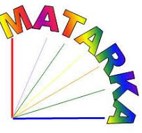Erdőfelújítási típusok botanikai értékelése a debreceni Nagyerdő gyöngyvirágos-tölgyesében
Absztrakt
A debreceni Nagyerdő (Convallario-Quercetum roboris) különböző korú és típusú felújított állományait és idős erdőrészleteket hasonlítottunk össze klasszikus cönológiai módszerekkel, és értékeltük Rényi-diverzitásukat. Rögzítettük a kvadrátok geokoordinátáit. Vizsgáltuk az idős és a középkorú erdőrészletek felújulási potenciálját, és számoltuk a kijelölt erdőrészletek felső 10 cm-es rétegében fekvő makkok csírázási százalékát.
A Simon-féle természetességi értékek magasabbak a természetes felújításban, ami természetesebb állapotra utal. A Rényi-diverzitás a természetes felújításban a legmagasabb, ahol az erdei fajok bizonyos része, és zavarástűrő fajok egyaránt megtalálhatók. Fiatal tölgyeket nem találtunk a bejárt idős erdőrészletekben. Mivel a csíraképes makkok száma magas volt, az életképes újulat hiányát a megváltozott körülmények, a talajvíz csökkenése okozhatja.
A természetes felújításokban természetvédelmi szempontból valóban sokkal kedvezőbb vegetációdinamikai folyamatok zajlanak. Két fő veszélyeztető tényező azonban ezekre az állományokra is hatással van és lesz: a gyöngyvirágos-tölgyesek optimumához képest alacsony talajvízszint és az idegenhonos fafajok térhódítása.
Hivatkozások
Bartha, D. (2001): A természetes erdők kezelése. – TermészetBúvár Alapítvány Kiadó, Budapest.
Bartha, D., Bölöni, J., Ódor, P., Standovár, T., Szmorad, F. & Tímár, G. (2003a): A magyarországi erdők természetességének vizsgálata. – Erdészeti Lapok 138: 73–75.
Bartha, D., Szmorad, F., & Tímár, G. (2003b): A magyarországi erdők természetességének erdőrészlet szintű értékelési lehetősége. – Erdészeti Lapok 138: 73–75.
Papp, L. (1989): A debreceni Nagyerdő növénytársulásai és flórája. Calandrella Nagyerdei különszám: 19-32.
Peterken, G. F. (1996): Natural Woodland. Ecology and Conservation in Northern Temperate Regions. – Cambridge University Press, Cambridge
Sódor, M., Szmorád, F., Frank, T. & Kovács, T. (2000): Idős facsoportok és fák jelentősége az erdőben, a hagyásfacsoportok és hagyásfák jelentősége. In Frank, T. (szerk.) Természet – Erdő – Gazdálkodás. – MME & Pro Silva Hungaria Egyesület, Eger, pp. 116-123.
Solymos, R. (2000): Erdőfelújítás és nevelés a természetes erdőgazdálkodásban. – Mezőgazdasági Szaktudás Kiadó, Budapest.
Szmorad, F. (2000): A cserjeszint szerepe. – In Frank, T. (szerk.) 2000. Természet – Erdő – Gazdálkodás. – MME & Pro Silva Hungaria Egyesület, Eger, pp 77–84.
Tóthmérész, B. (1995): Comparative analysis of different methods of diversity orderings. – J. Veg. Sci. 6: 283–290.
Török, P., Tótmérész, B. (2004): A debreceni nagyerdő növényzeti arculatának vizsgálata. Természetvédelmi Közlem. 11: 107–116.






